Loppers are an essential tool for gardeners and landscapers. They are used to cut branches and saplings that are too thick for scissors or pruning shears. Loppers come in a variety of sizes, but all have one thing in common – they need to be sharpened occasionally for optimal cutting power. In this article, we will answer some of the most frequently asked questions about lopper sharpening, provide product reviews, and offer some useful tips on how to get the best results.
Where Do You Use The Loopers In The Garden?
Before You Begin
Before you sharpen your lopper, you’ll want to make sure that it’s in working order. Loppers are designed to cut through branches and thick foliage with ease, but if the blades have become dull or damaged, sharpening alone won’t help. Check for signs of rust or discoloration on the blades, as well as any nicks or chips. If your lopper is beyond repair, consider investing in a new one.
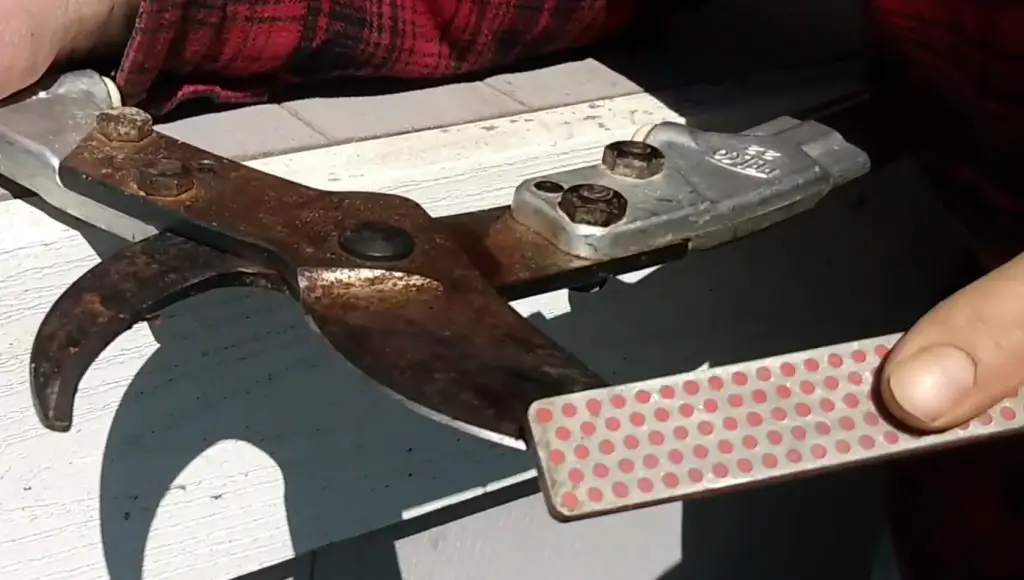
To get started on sharpening your lopper, gather the materials you’ll need:
- Protective eyewear;
- Work gloves;
- File or grinder;
- Oil (such as vegetable oil) [1];
Step 1: Clean Tree And Plant Sap From Blades
Before sharpening your loppers, it’s important to make sure they are clean and free of dirt, plant sap, and corrosion. To do this, you should use a small wire brush to remove any debris from the blades. Once you’ve done that, you can start sharpening the blade edges. [1]
Step 2: Sharpen With The Angle Of The Bevel
Before you start sharpening your loppers, it’s important to understand the angle of the bevel on the blades. This is because it will determine how you sharpen them. Generally, most lopper blades have a 30-degree bevel angle – which means you should sharpen at an angle that matches this. To find out what angle your blade has, you can use a protractor or measure it with a ruler. [1]
Step 3: Stroke From The Pivot To The Tip Of The Blade
Once the pivot is sharpened, you can move on to the rest of the blade. Start from the pivot and move up toward the tip of the blade in long strokes. Make sure your strokes are even and consistent across the entire blade. You should also make sure that you stay away from any serrations or notches on the blade as those are harder to sharpen. [1]
Step 4: Sharpen Both Sides Of An Anvil Lopper Blade
Once you have sharpened the bevel side of your lopper blade, grab your second file and repeat this process on the opposite side. This is known as the anvil side of a lopper blade. The anvil side should also be sharpened in small strokes against the file, with each stroke moving away from you. You should sharpen this side until it is as sharp as the bevel side. [1]
Step 5: Finish By Lubricating For Protection
Once you have sharpened your loppers, the last step is to lubricate the blades and moveable parts. This will help protect them from rust, corrosion, and further wear and tear. It can also help ease the cutting process when using your tool.
Before applying any kind of lubricant, make sure to clean the blades and handle thoroughly. This will help prevent any build-up over time, which can make it harder for your loppers to function properly. [1]
How do sharpen loppers with a whetstone?
Sharpening loppers with a whetstone is an easy and effective way to keep your tools in top condition. To sharpen with a whetstone, you’ll need to assemble the following materials:
- A medium-grade (1000 grit) sharpening stone;
- Water or oil for lubrication;
- A rag;
- A honing guide;
- Safety goggles and gloves;
Once you’ve gathered your materials, the sharpening process is simple. Start by lubricating the stone with either water or oil. Next, secure the lopper in a honing guide to ensure it stays at an even angle as you sharpen. Begin slowly and evenly grinding the blade along the stone, starting at one end and working your way to the other.
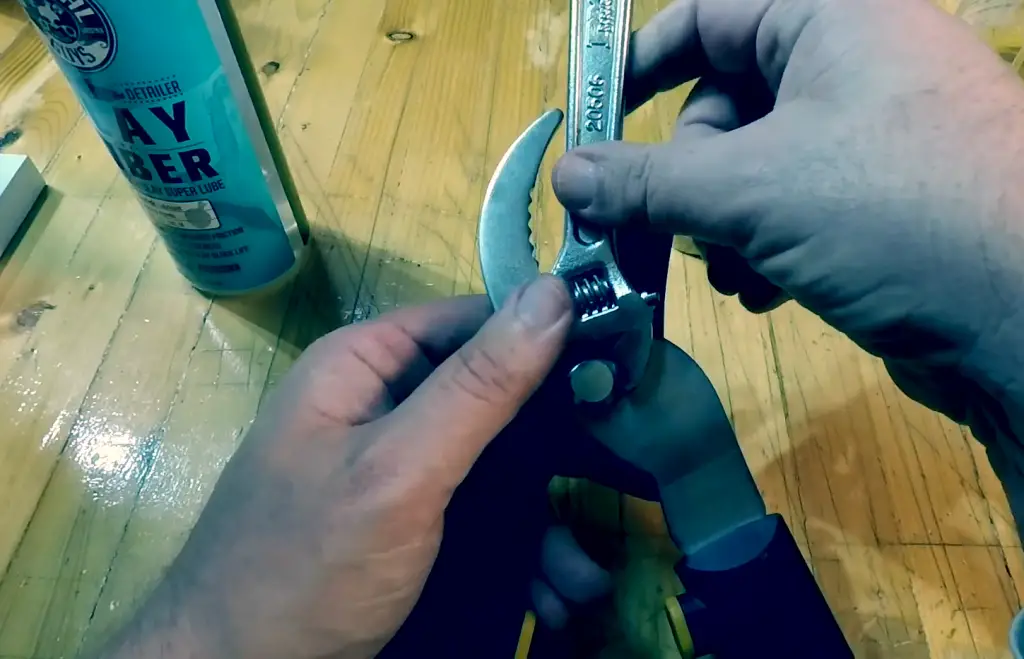
Make sure to keep a consistent angle as you sharpen each side of the blade, and rinse off any metal shavings that accumulate on your stone.
Finally, wipe off any excess moisture with a clean rag and inspect for sharpness – if it’s not as sharp as you’d like, repeat the process until it is! [2]
How to sharpen tree loppers with a file?
Sharpening your tree loppers with a file is a relatively simple process. However, it does require some skill and patience.
Here are the steps to follow for successful sharpening:
- First, you’ll want to assess the blade edge of your lopper. If there’s still a sharp edge on one side, then start by filing down the opposite side until both sides have evened out to be straight and equal in length;
- Next, use a medium-grit file or sharpening stone to sharpen the blade edges and angles of your lopper blades. Start by using slow strokes along the entire length and curvature of each blade edge, taking care not to put too much pressure on any single area;
- Once you have finished filing the blade edges, use a finer grit file to remove any scratches or marks left from the previous step. Make sure to continue using slow strokes and avoiding too much pressure on any single area of the blades;
- Finally, use a honing stone for a fine finish on your lopper blade edges and angles. Again, take care not to put too much pressure on any single area and continue using slow strokes along the entire length and curvature of each blade edge until they become sharp again [2];
How to Sharpen Grass Shears and Hedge Clippers?
Grass shears, also known as edging shears or grass clippers, are essential gardening tools for keeping your lawn and shrubbery in shape. Hedge clippers are great for trimming hedges and bushes into neat shapes. While these tools make light work of landscaping projects, they will eventually need to be sharpened in order to perform their best.
Here’s what you should do:
- Start by unscrewing the bolt that holds the blades together. Place the blades on a flat surface and check for any dirt or debris that needs to be removed;
- Once you’ve cleaned the blades, position them with one blade held firmly against a flat stone or file. Move the blade in an arc-like motion until it is sharpened to your satisfaction. Repeat this process on both sides of each blade;
- To finish up, use a fine piece of sandpaper to smooth out any rough edges that may have been created during the sharpening process. Wipe down both sides of the blades with oil before reassembling and storing your shears and clippers away safely [3];
How to Sharpen a Shovel or Hoe?
If you’re a gardener, chances are you have a hoe or shovel handy. Although these tools are designed to be tough and long-lasting, the blades of both will eventually become dull and require sharpening. Fortunately, it’s easy to sharpen hoes and shovels with the right tools and a bit of elbow grease.
To sharpen your hoe or shovel, start by gathering all the supplies you need: an angle grinder or file, oil stone, bench vise, protective goggles, and gloves. You can find all of these items at most hardware stores. Next, secure the blade in your vise so that it won’t move when you’re working on it.
Now you’re ready to sharpen the blade. Start by grinding off any nicks or burrs with your angle grinder, taking care not to overheat the metal and cause it to warp. Then dip your oil stone in water and use it to hone the blade until it’s sharp and free of any pitting or rust. When you’re done, remove the blade from your vise and wipe down both sides with a clean cloth. [3]
How to Sharpen Pruners?
When it comes to sharpening your pruners, you’ll need to determine what type of blade they have first as this will help you decide on the best method for sharpening them.
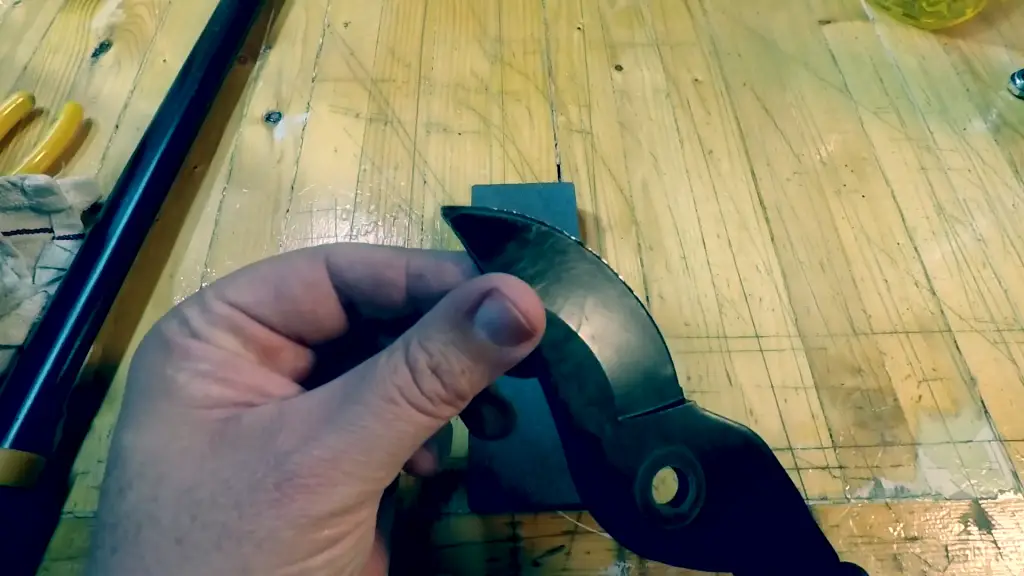
Steel blades are most common and can be easily sharpened using an oil stone, diamond, or ceramic sharpener. You’ll want to start by cleaning the blade with mild detergent and water before beginning the sharpening process. Start at one end of the blade and move it in a circular motion against the stone while maintaining even pressure. Once you’ve reached the other side, switch directions until you have a sharp edge.
Carbide blades are more durable and can be difficult to sharpen without specialized tools such as a grinding wheel or belt sander. If you do not have access to these tools, it is best to take your pruner to a professional for sharpening. [3]
FAQ
Do loppers need sharpening?
Yes, like any other cutting tool, loppers need to be sharpened regularly for the best performance. Over time the blades will become dull and require honing or sharpening. This can be done easily with a file or grinding stone.
Can you sharpen bypass loppers?
Yes, bypass loppers can be sharpened with a file or grinding stone. If you are using a filing tool to sharpen the blades, it is important to make sure that both sides of the blade remain even throughout the sharpening process. Take your time and try to achieve as smooth an edge as possible.
Can you sharpen loppers with sandpaper?
Yes, you can use sandpaper to sharpen loppers. Start with a lower grit and work your way up to a finer grit to get the best results. Make sure you are evenly sharpening both sides of the blade and be sure to wipe away any debris or dust that accumulates while sharpening.
Can lopper blades be sharpened?
Yes, lopper blades can be sharpened with a file or grinding stone. It is important to make sure that both sides of the blade are even throughout the sharpening process. Take your time and try to achieve as smooth an edge as possible.
How do you sharpen a lopper with a grinder?
If you are using a grinder to sharpen your loppers, it is important to use the proper safety equipment. Make sure you have protective eyewear and gloves before beginning. Start by making small passes on the blade, focusing on one section at a time. Move slowly and evenly until you reach the desired sharpness. Be sure to wipe away any debris or dust that accumulates while sharpening.
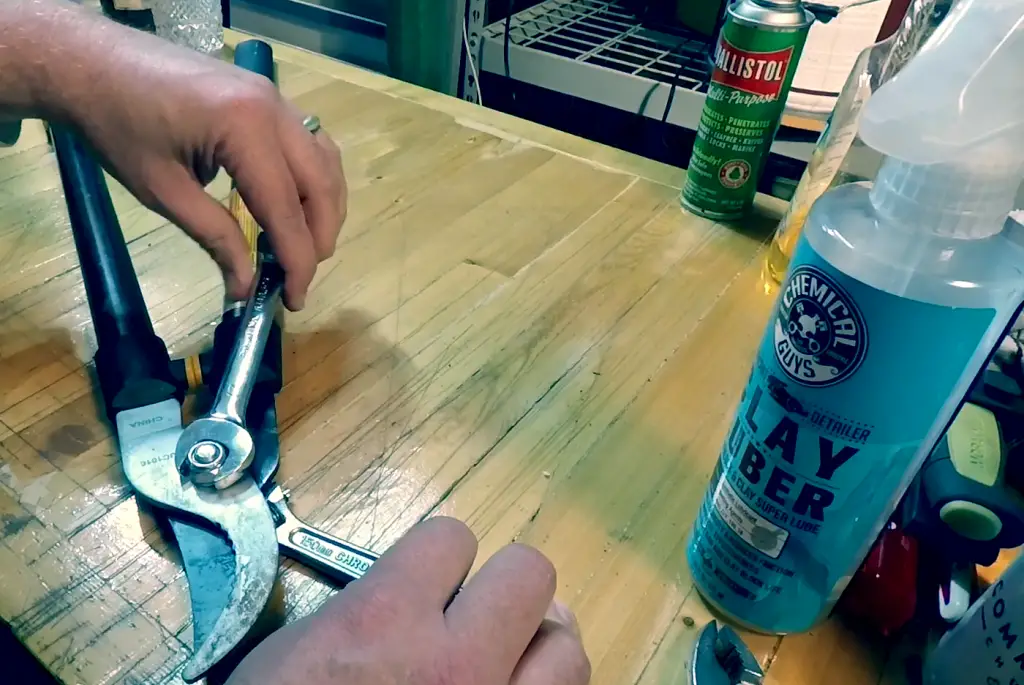
How do you clean and sharpen garden loppers?
To clean garden loppers, you should use a damp cloth to wipe away any dirt or debris from the blades. Then sharpen the blades using a file or grinding stone. Make sure both sides of the blade are even throughout the sharpening process. Take your time and try to achieve as smooth an edge as possible. Wipe away any debris or dust that accumulates while sharpening.
How much does it cost to sharpen loppers?
The cost of sharpening loppers can vary depending on where you live and the type of service provider you use. Generally speaking, it should not cost more than a few dollars to sharpen your loppers. However, if you are using a professional sharpening service they may charge an hourly rate or a flat fee for the job.
How do you sharpen secateurs and loppers?
Secateurs and loppers can be sharpened in the same way. Use a file or grinding stone to sharpen the blades, making sure both sides of the blade are even throughout the sharpening process. Take your time and try to achieve as smooth an edge as possible. Wipe away any debris or dust that accumulates while sharpening.
Useful Video: Sharpening Fiskars Loppers: Garden Pruners
Conclusion
When it comes to sharpening your loppers, the best approach is to sharpen them regularly. This will help you get the most out of your tools and ensure that they are up to the task when you need them. If you’re ever in doubt, remember that a good rule of thumb is to sharpen at least once per season. Doing so can help you keep your loppers working at their peak performance throughout the year.
Good sharpening practices are important for any garden tool, but they are especially important when it comes to loppers because those tools need a very precise edge in order to function correctly and safely. Using the right technique and making sure that you sharpen your loppers regularly should keep them in perfect condition for years to come. With these tips, you’ll be able to confidently sharpen your own loppers and make sure that they’re always ready to use whenever you need them! Good luck!
References:
- https://www.bobvila.com/articles/how-to-sharpen-loppers/
- https://gardeningbrain.com/how-to-sharpen-loppers/
- https://www.mygardenlife.com/mobile-app/how-to/how-to-sharpen-garden-tools





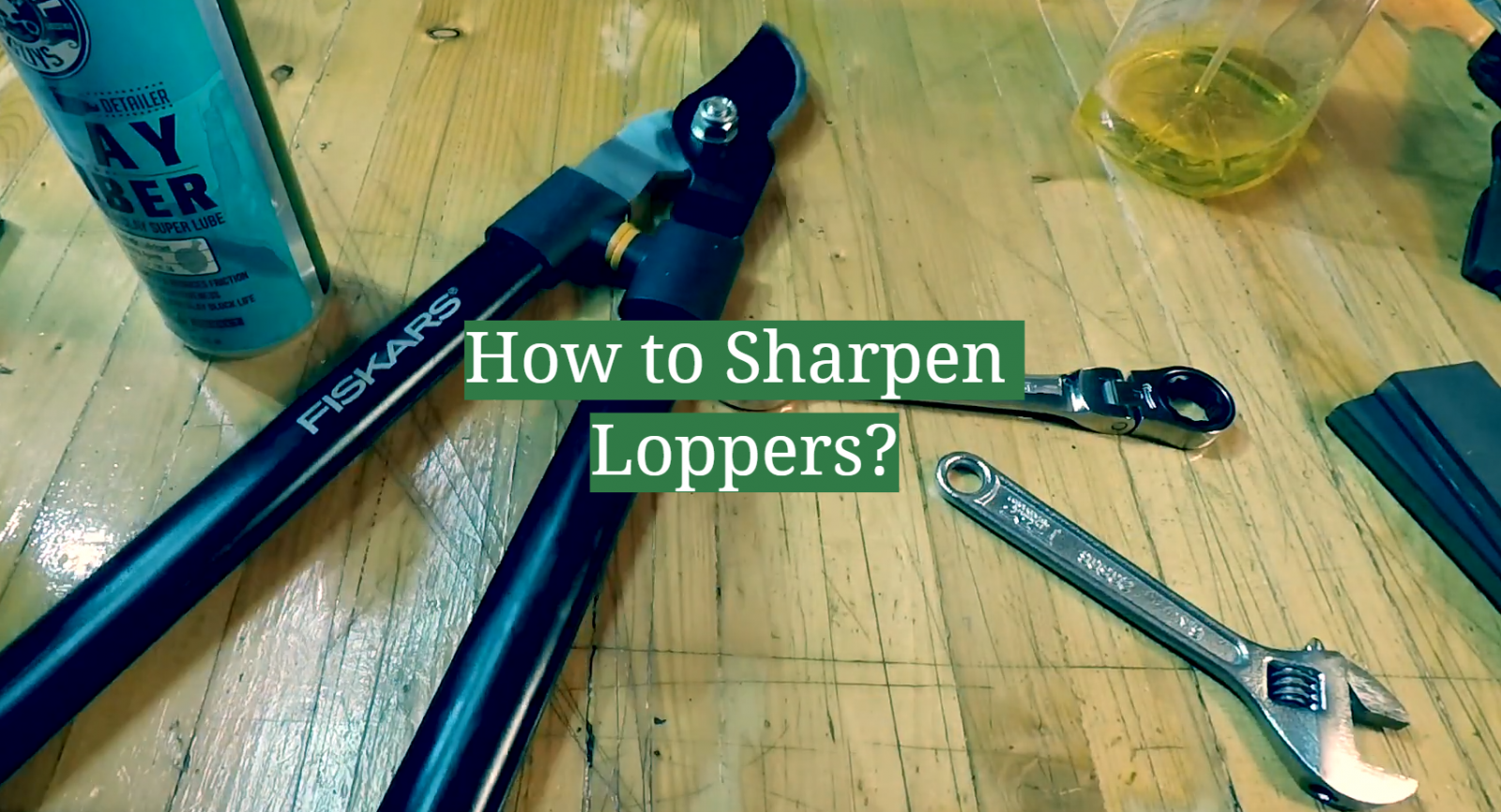
Leave a Reply
View Comments